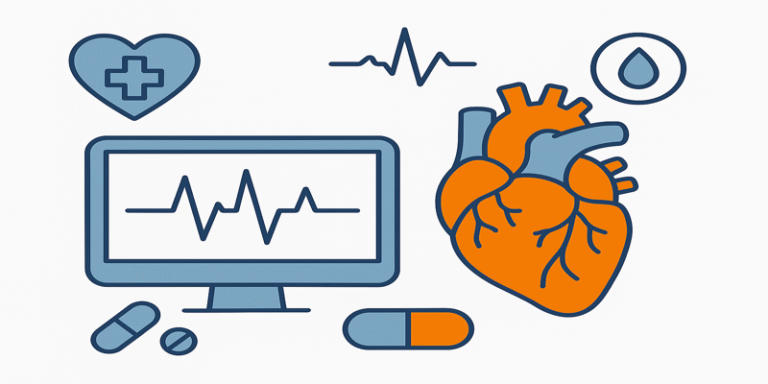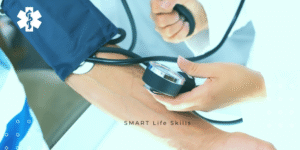Cardiology is the branch of medicine devoted to the study, diagnosis, treatment, and prevention of diseases affecting the heart and the circulatory system. These diseases range from common conditions like coronary artery disease to complex disorders such as heart failure and arrhythmias. Cardiologists play a critical role in keeping the heart healthy, both through preventive strategies and by providing life-saving interventions when disease occurs.
Cardiology integrates knowledge from anatomy, physiology, pathology, and pharmacology, making it a multidisciplinary field. Given that cardiovascular disease (CVD) remains the leading cause of mortality worldwide (World Health Organization, 2021), the discipline is central to both clinical practice and medical research.
1.0 The Scope of Cardiology
Cardiology covers a wide range of heart and vascular conditions, including:
- Coronary artery disease (CAD) – narrowing or blockage of the arteries supplying the heart, often due to atherosclerosis.
- Heart failure – when the heart cannot pump blood efficiently to meet the body’s needs.
- Arrhythmias – irregular heart rhythms, which can range from harmless to life-threatening.
- Valvular heart disease – malfunction of one or more of the heart’s valves.
- Congenital heart disease – structural heart problems present from birth.
The role of cardiology extends from preventive care—helping patients reduce risk factors like high blood pressure, smoking, and high cholesterol—to complex interventions such as angioplasty and heart surgery.
2.0 Diagnostic Tools in Cardiology
Accurate diagnosis is the foundation of effective heart care. Cardiologists use a variety of tools to evaluate heart function and detect abnormalities.
2.1 Electrocardiogram (ECG)
The ECG records the electrical activity of the heart, helping to detect arrhythmias, signs of heart attack, or problems with heart conduction pathways.
2.2 Echocardiography
This ultrasound-based technique provides real-time images of the heart’s structure and function. It is vital for assessing valve function, measuring heart chamber sizes, and identifying heart muscle damage.
2.3 Cardiac Catheterisation
A minimally invasive procedure in which a catheter is inserted into a blood vessel and guided to the heart. It allows for:
- Measuring pressures within the heart
- Injecting contrast dye to visualise coronary arteries (coronary angiography)
- Performing treatments such as stent placement
3.0 Risk Factors and Prevention
Prevention is a cornerstone of cardiology. Many cardiovascular diseases are linked to modifiable risk factors:
- Hypertension
- High cholesterol
- Diabetes
- Smoking
- Obesity
- Sedentary lifestyle
Evidence shows that adopting a heart-healthy lifestyle—including regular exercise, a balanced diet, and stress management—can dramatically reduce cardiovascular risk (Piepoli et al., 2016).
4.0 Treatment Approaches
Cardiologists employ a range of treatments, from lifestyle advice to advanced medical procedures.
4.1 Medications
Commonly prescribed drugs include:
- Beta-blockers – to reduce heart rate and blood pressure.
- ACE inhibitors – to lower blood pressure and protect heart function.
- Statins – to reduce cholesterol levels.
- Anticoagulants – to prevent blood clots.
4.2 Interventional Procedures
- Percutaneous coronary intervention (PCI) – often called angioplasty, involves widening narrowed coronary arteries with a balloon and stent.
- Ablation therapy – destroys abnormal electrical pathways causing arrhythmias.
4.3 Surgical Options
- Coronary artery bypass grafting (CABG) – bypassing blocked arteries using grafted blood vessels.
- Valve repair or replacement – for treating severe valvular disease.
- Heart transplantation – for end-stage heart failure.
5.0 Subspecialties in Cardiology
Cardiology has several subspecialties, allowing for focused expertise in complex cases.
- Interventional cardiology – specialises in catheter-based treatments like angioplasty.
- Electrophysiology – focuses on diagnosing and treating heart rhythm disorders.
- Heart failure specialists – manage advanced cases, including those needing mechanical assist devices.
- Paediatric cardiology – treats congenital and acquired heart conditions in children.
- Preventive cardiology – targets early intervention and risk factor management.
6.0 Cardiology and Research
Research in cardiology continually pushes the boundaries of what is possible in diagnosis, treatment, and prevention.
- Imaging technology advancements, such as 3D echocardiography and cardiac MRI, allow earlier and more precise detection of heart problems.
- Regenerative medicine explores using stem cells to repair damaged heart tissue.
- Wearable technology and AI algorithms are helping to monitor patients remotely and predict heart events before they occur.
These innovations hold promise for personalised medicine, where treatments are tailored to each patient’s genetic profile and lifestyle.
7.0 Cardiovascular Disease: A Global Challenge
According to the WHO (2021), cardiovascular diseases account for an estimated 17.9 million deaths each year. This burden is not confined to high-income nations; in fact, 75% of CVD deaths occur in low- and middle-income countries.
The challenge is compounded by ageing populations, urbanisation, and lifestyle changes leading to higher rates of obesity and diabetes. Public health strategies must focus on:
- Community education
- Access to preventive healthcare
- Affordable treatment options
8.0 The Patient Journey in Cardiology
A patient’s journey through cardiology often follows a structured pathway:
- Screening and risk assessment
- Diagnosis through imaging and laboratory tests
- Treatment planning
- Intervention, if necessary
- Long-term follow-up and rehabilitation
Cardiac rehabilitation programmes, combining exercise training, education, and counselling, are essential for recovery and preventing recurrence (Anderson et al., 2016).
9.0 The Future of Cardiology
The future of cardiology lies in technological integration and preventive strategies:
- Telecardiology – delivering remote consultations and monitoring.
- Genomic screening – identifying individuals at high genetic risk for CVD.
- Smart implants – such as devices that can automatically detect and treat arrhythmias.
- Global initiatives – aimed at reducing disparities in cardiovascular care.
As Libby et al. (2018) highlight, the next frontier will combine traditional cardiovascular medicine with cutting-edge biomedical technology.
Cardiology remains one of the most dynamic and impactful branches of medicine. From preventing heart disease through lifestyle interventions to performing complex life-saving surgeries, cardiologists are at the forefront of safeguarding one of the body’s most vital organs.
With cardiovascular disease continuing to be the leading cause of death globally, the importance of cardiology cannot be overstated. Advances in diagnostics, therapeutics, and preventive strategies promise to reduce the burden of heart disease in the years to come, but achieving this will require a collaborative effort between clinicians, researchers, policymakers, and the public.
References
Anderson, L., Oldridge, N., Thompson, D.R., Zwisler, A.D., Rees, K., Martin, N. and Taylor, R.S., 2016. Exercise-based cardiac rehabilitation for coronary heart disease: Cochrane systematic review and meta-analysis. Journal of the American College of Cardiology, 67(1), pp.1–12.
Libby, P., Bonow, R.O., Mann, D.L., Zipes, D.P. and Tomaselli, G.F., 2018. Braunwald’s Heart Disease: A Textbook of Cardiovascular Medicine. 11th ed. Elsevier.
Piepoli, M.F., Hoes, A.W., Agewall, S., Albus, C., Brotons, C., Catapano, A.L., Cooney, M.T., Corrà, U., Cosyns, B., Deaton, C., Graham, I., Hall, M.S., Hobbs, F.D.R., Løchen, M.L., Löllgen, H., Marques-Vidal, P., Perk, J., Prescott, E., Redon, J., … Binno, S., 2016. 2016 European Guidelines on cardiovascular disease prevention in clinical practice. European Heart Journal, 37(29), pp.2315–2381.
World Health Organization, 2021. Cardiovascular diseases (CVDs). [online] Available at: https://www.who.int/news-room/fact-sheets/detail/cardiovascular-diseases-(cvds) [Accessed 9 Aug. 2025].









